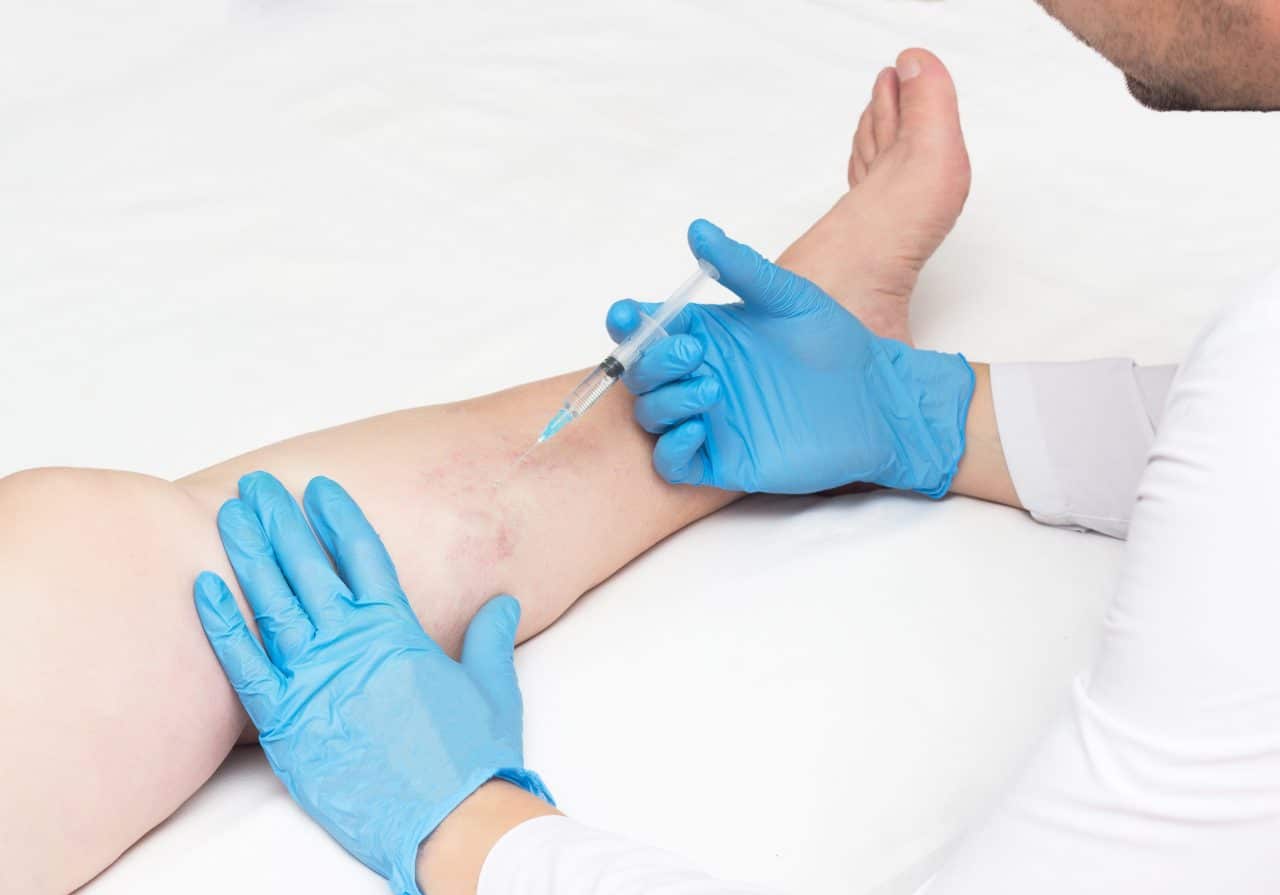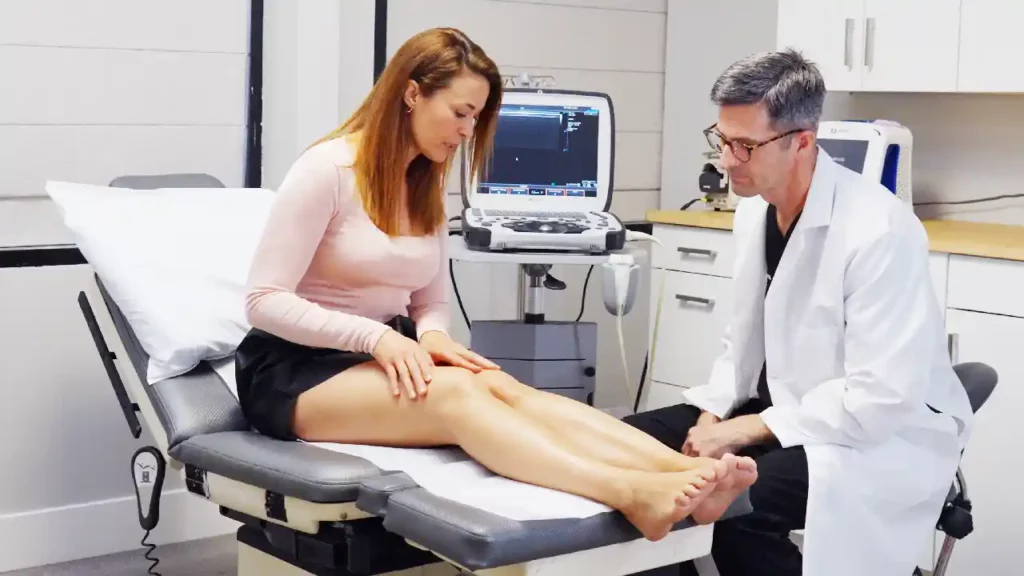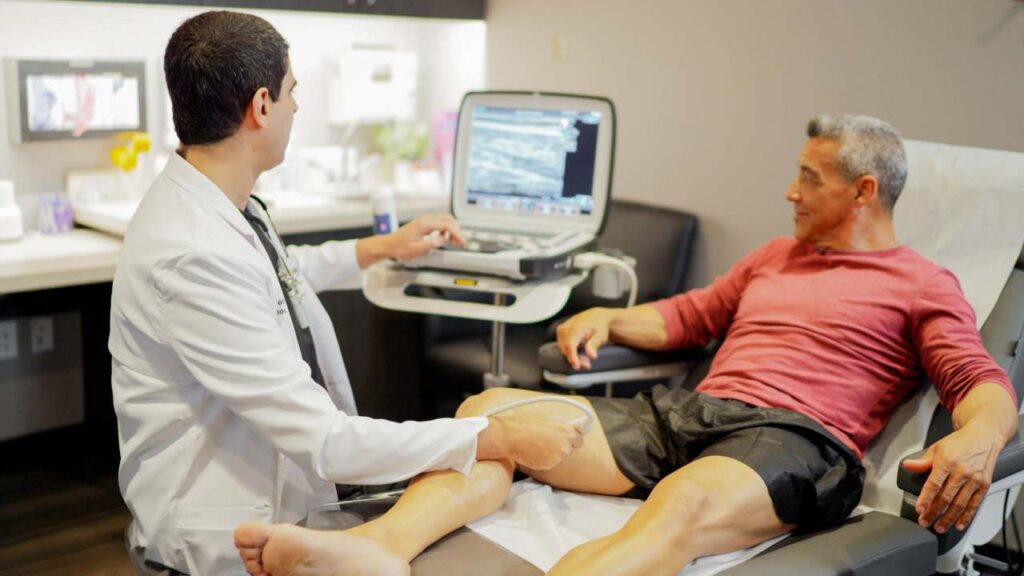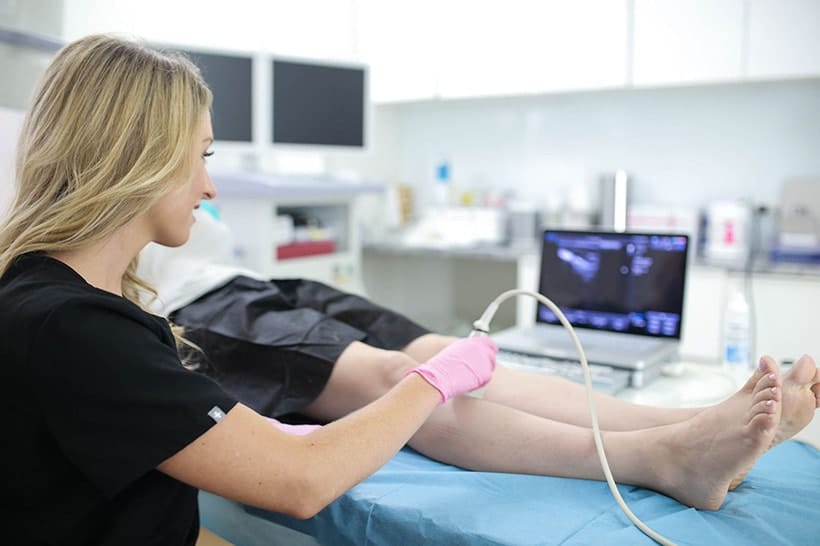1. Determine What Doctor to See for Vein Problems
Varicose veins are common, and some don’t become problematic. But most patients experience a range of mild to severe symptoms with varicose veins. These include swelling, cramping, itching, pain, restlessness, and heaviness in the legs. Symptoms can progress to include venous stasis dermatitis, venous ulcerations, profuse bleeding, hyperpigmentation, and blood clots.
Don’t trust your varicose veins to a dermatologist or esthetician. They aren’t equipped to treat the symptoms or complications of varicose veins. Book an appointment with a board certified, Harvard-trained vein doctor who can prevent severe complications. These doctors provide varicose vein treatment, and they also treat the underlying cause, which is essential to preventing more vein damage and progressive problems. In addition, vein doctors’ procedures are covered by insurance, unlike most cosmetic vein specialists’ treatments.

2. Find a Top Varicose Veins (Venas Varicosas) Doctor Near Me
Vein doctors aren’t all trained in the same methods, nor do they all have the same level of expertise. For varicose veins, you want a top varicose veins (en español, venas varicosas) doctor. The best vein doctors in California are Dr. Carly Guthrie, Dr. Jasmine Koo, Dr. Walter Lech, and Dr. Billy Schoenfeld. Each of these physicians trained at Harvard and is either a board certified vein specialist or vascular surgeon.
3. Ask the Vein Doctor for a Diagram of Veins in Legs
If you have varicose veins in your legs, you might have Chronic Venous Insufficiency. This common problem involves valve failure inside the vein that allows blood to pool and elevate endovenous pressure. That pressure is what causes most varicose veins to develop. If you have this issue, you can’t just treat the surface damage. You must also correct the underlying cause. Otherwise, varicose veins and spider veins may continue to develop.
The best way to locate the origin of varicose veins is with a diagram of veins in the legs. The medical term for this is vein mapping. Doctors use ultrasound technology to bounce sound waves off the veins. The resulting sound tells doctors where there are blockages in veins and indicates which veins are engorged with blood. The sounds generate images or videos on the screen, so doctors can see a full diagram of problems in your circulation.
4. Use the Leg Vein Diagram to Find Problems in Vein Anatomy
Once a doctor maps your leg veins, they can identify problems like varicose veins, spider veins, blood clots, Chronic Venous Insufficiency, broken valves, and engorged blood vessels. They can also chart which veins are connected to each other so they can inject treatment into damaged veins without it traveling into healthy veins. The best vein doctors can also use ultrasound technology to guide their treatments, not just to map the veins. This helps ensure precise and safe vein treatment.
5. Consider What the Vein and Pain Treatment Clinic Suggests
After your vein assessment, consider the vein doctor’s recommendations. Do they suggest lifestyle adjustments like wearing compression stockings and avoiding sitting or standing for a long period of time? If so, ask them if that will suffice. For some patients, symptom management is enough. But lifestyle adjustments can’t remove varicose veins. Many patients require treatment for varicose veins.
The most common varicose vein treatments are sclerotherapy, radiofrequency ablation, endovenous laser ablation, vein adhesives, and mechanochemical ablation. These are all minimally invasive treatments that are completed in the office, without general anesthesia, in under 30 minutes. If your vein doctor recommends surgery, get a second opinion. Surgery is no longer the first line of treatment for varicose veins, and only a small percentage of patients require it.
6. Ask, “Is Surgery Necessary for Varicose Veins?”
If your vein specialist suggests surgery, ask if it’s necessary. Some vascular doctors are only trained in surgery, so seek another opinion if that’s the case. If the surgeon is also trained in minimally invasive methods but still recommends surgery, have them explain why. Patients with blood clots, severely large or tortuous veins, or certain medical conditions might require surgery.
7. Seek Surgical Alternatives for “Leg Vein Removal Near Me”
If your doctor can’t explain why you need surgery, or doesn’t provide alternatives, look elsewhere. Choose a board certified vein specialist who favors minimally invasive procedures. These treatments work better than surgery for most patients, and they’re gentler, safer, faster, and more affordable.
8. Make Lifestyle Changes to Support the Anatomy of Veins
To remove existing varicose veins, minimally invasive vein treatment is the best solution. These procedures work within minutes, and they treat the structural damage, not just the symptoms. If your doctor suggests them, lifestyle changes can help prevent varicose veins from forming again in the future.
These include maintaining a healthy weight and active lifestyle and avoiding sitting or standing for a long period of time whenever possible. Some patients benefit from wearing compression stockings or elevating their legs while at rest. As mentioned, these tips won’t remove existing varicose veins, but they can help reduce the likelihood of developing new ones.
9. Know What Signifies an Emergency for Dead Veins
The sooner you treat varicose veins, the better your outcome will be. But some spider veins and varicose veins require immediate attention. Some people refer to damaged blood vessels as “dead veins,” but they aren’t technically dead. They’re more like a dead end because they don’t effectively pump blood back to the heart. But that doesn’t mean they don’t contain blood. In fact, they are prone to profuse bleeding that’s difficult to control, if the vein is scraped or injured. This is an emergency. Here are all the reasons to seek immediate attention for your veins.
- Uncontrolled bleeding
- Chest pain
- Difficulty breathing
- Passing out
- A sudden, warm, red spot beneath the skin
- A venous ulcer that is red and weeping and accompanied by a fever
- Redness that spreads down the leg
- Rapid progression of swelling
10. Establish What Doctor to See for Veins in an Emergency
The best vein doctors in California are those mentioned in point number two. But if you have any of the emergency symptoms listed above, you should head to the emergency room. Emergencies are rare for patients who see a vein doctor, because vein specialists can prevent complications before they arise. The best answer for how to prevent varicose veins from having complications is to book a vein consultation.






